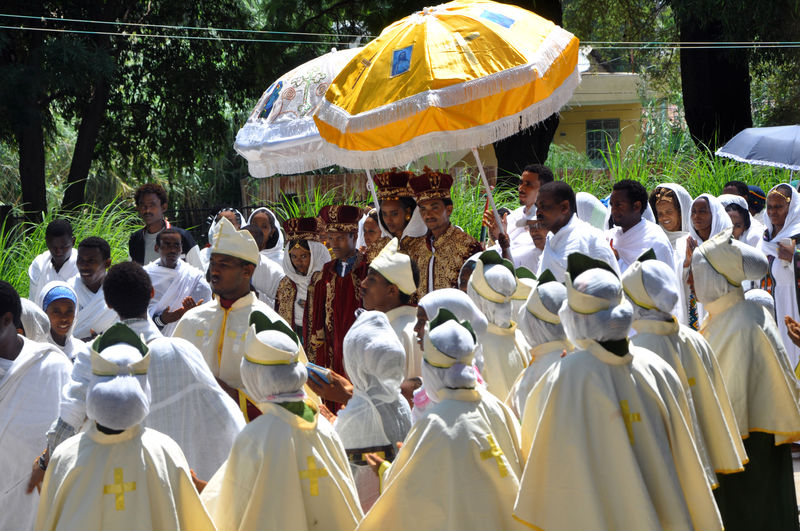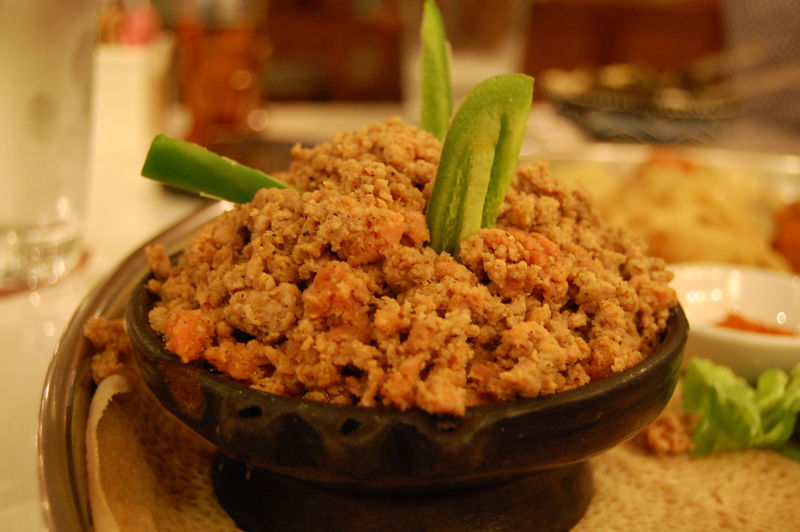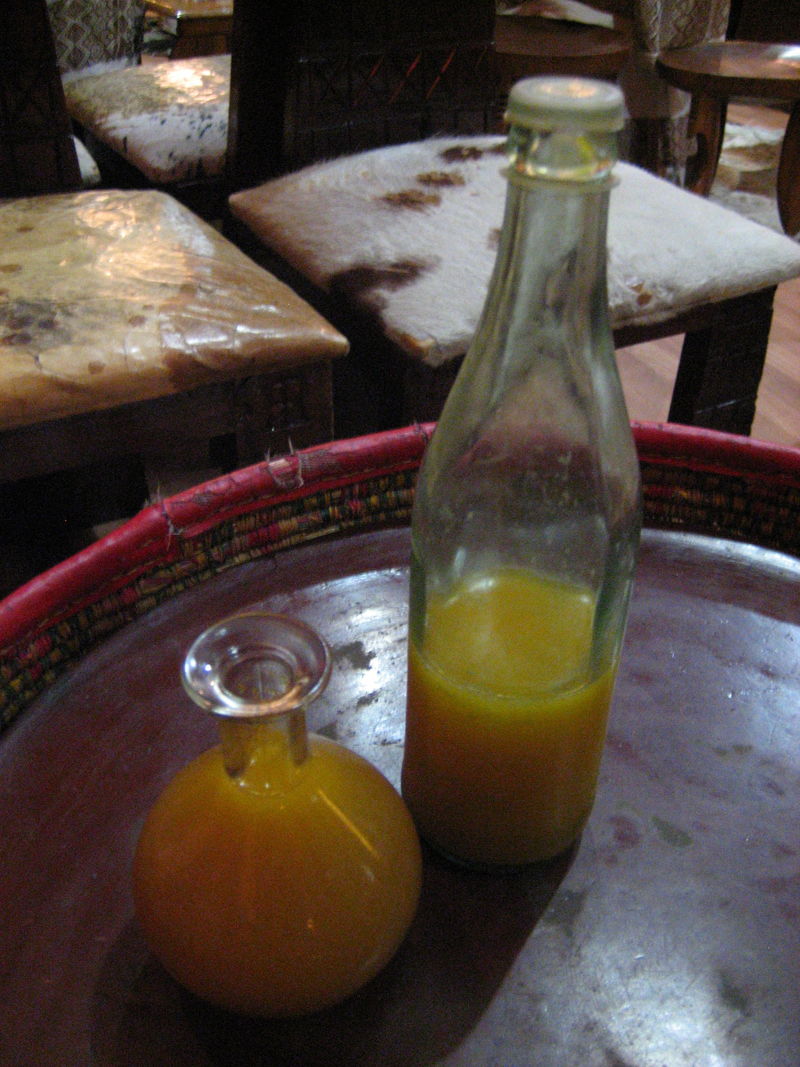Ethiopian Wedding
Ethiopian weddings often involve arranged marriages with a strong emphasis on family approval and the bride's virginity, particularly in rural areas. Key traditions include the "Telosh" event where the groom's family brings gifts to the bride two days before the wedding, and the engagement happening during the wedding reception with cake cutting and ring exchange. Celebrations include welcoming the couple by grandparents, traditional dances, a special dinner with "kitfo" and "tej," the "gursha" feeding tradition, and concluding festivities like the "meles" and "kelekel," with a honeymoon lasting from one week to three months depending on wealth.
Ethiopian Wedding
Arranged marriages are still common in parts of Ethiopia like Amhara and Tigray. Virginity of the bride is very much appreciated especially in rural communities. Family approval of the marriage is still important.
It is also imporatant that a bride and groom are not blood related in five generations.
"Telosh" is a traditional Ethiopian event held two days before the wedding. A groom and his family members bring various presents to a bride. These presents include a wedding dress and/or jewellery. Others gathered there can also give some presents.
In the morning of the wedding day both bride and groom get ready for the wedding. The groom and his best man arrive to the bride's home. When they arrive they hear a traditional song according to which no stranger is allowed to enter the house. After few minutes of kind words by the groom he is allowed to get in.
He then gives his bride some flowers. She accepts them and kiss her future husband. The couple then walks to their car. Others enter their vehicles too. They drive to some nice place where numerous photographs are made.
In some Ethiopian villages at 6.00 a.m. a groom takes his bride to the wedding ceremony on a mule. In most situations cars are used.

Two-thirds of Ethiopian population is Christian. The rest of its people are Muslims. So, religious weddings in Ethiopia are either Christian or Muslim.
The wedding reception starts by the welcoming of the newlyweds by their grandparents dressed in the traditional clothes. The bride and groom walk towards and kiss their knees. The grandparents and parents then bless the couple.
When the couple moves further in the wedding venue towards the place where they will seat everybody stands up and welcomes them with a song. The flower girls throw flower petals in front of the couple.
It may sound unusual but in Ethiopia the engagement happens during the wedding reception. In this ceremony the couple cuts the cake and rings are exchanged. There is some champagne too. A bride also throws candies to the people present at the reception.
The couple then goes from table to table and takes photographs with the guests. After that it is time for some dancing. The couple dances their first dance. Other people start dancing too. It is a tradition that a member of the band reads messages to the couple by those unable to attend the wedding.

The next event on the wedding day is a dinner organized by the groom's parents. Probably the most famous Etiophian dish served at weddings is "kitfo". This dish is made of raw or cooked minced beef. Everyone drinks traditional Ethiopian beverage known as "tej".

In Ethiopia there is a tradition called "gursha" where family members and friends feed each other and that way show emotions. The "gursha" happens at weddings too.
There is no Ethiopian wedding without the "meles". It is held on a day after the wedding. On this event the couple wears traditional clothes known as the "kaba". A bread is cut. A bride's mother gives a nickname to her daughter.
The wedding festivities end on the third day. A special event for all those who were not able to arrive at the wedding is held. This event is called "kelekel". The bride's and groom's parents bless their children. Now they are able to start their new life together.
The honeymoon in Ethiopia has slightly different meaning that in other cultures. For those poor it lasts for a week. The rich can extend it to up to three months. Until sunset the bride stays at home. After that she can go out but a best woman must be with her.
References
Wedding in Ethiopian culture
http://milcah-degefu.blogspot.com/2012/07/wedding-in-ethiopian-culture.html
Abraha Abadi, Marriages and Wedding ceremonies in Ethiopia
http://www.ethiomedia.com/newpress/marriage.html
Candice Vallantin, How to Party at an Ethiopian Wedding: The Unspoken Rules
http://hayo.co/how-to-party-ethiopian-wedding-the-unspoken-rules/
The Ethiopian Wedding Tradition–One of the World’s most Beautiful and Egalitarian
https://manlymanners.wordpress.com/2016/03/05/the-ethiopian-wedding-tradition-one-of-the-worlds-most-beautiful-and-egalitarian/
Ethiopian Wedding
http://www.martatravelblog.com/?p=583
The Heart of Ethiopia: Weddings
http://theheartofethiopia.blogspot.com/2006/03/weddings.html
Kitfo
https://en.wikipedia.org/wiki/Kitfo
Image(s)
Traditional Ethiopian Wedding (photo by Favila Roces, Flickr)
https://www.flickr.com/photos/favilaroces/12070148586
Kitfo (photo by stu_spivack, Flickr)
https://www.flickr.com/photos/stuart_spivack/2985296780/
Tej (photo by Eugen Kim, Flickr)
https://www.flickr.com/photos/eekim/2327834216/
Creative Commons - File:Sunset, Turmi Rd, Omo Valley, Ethiopia (21218273716).jpg